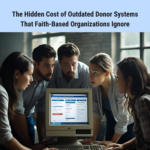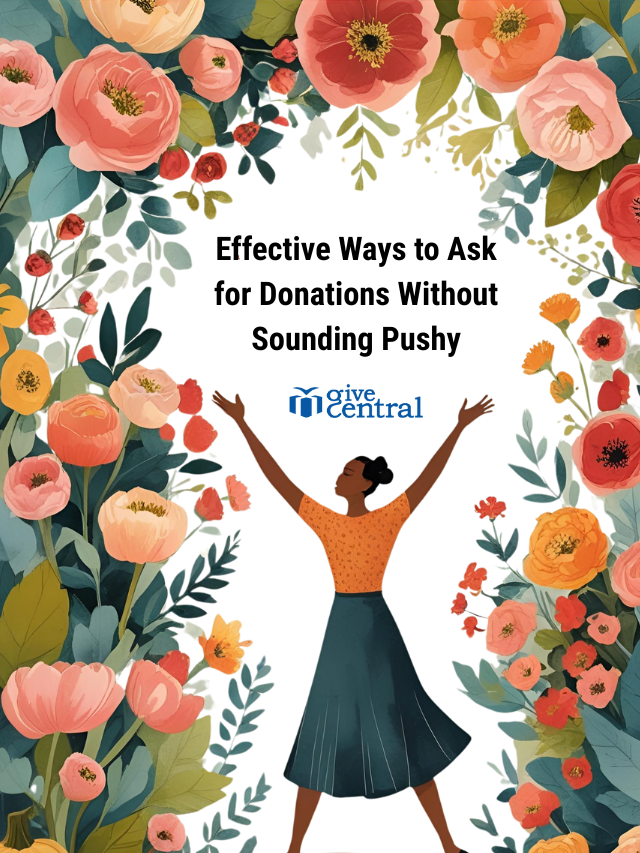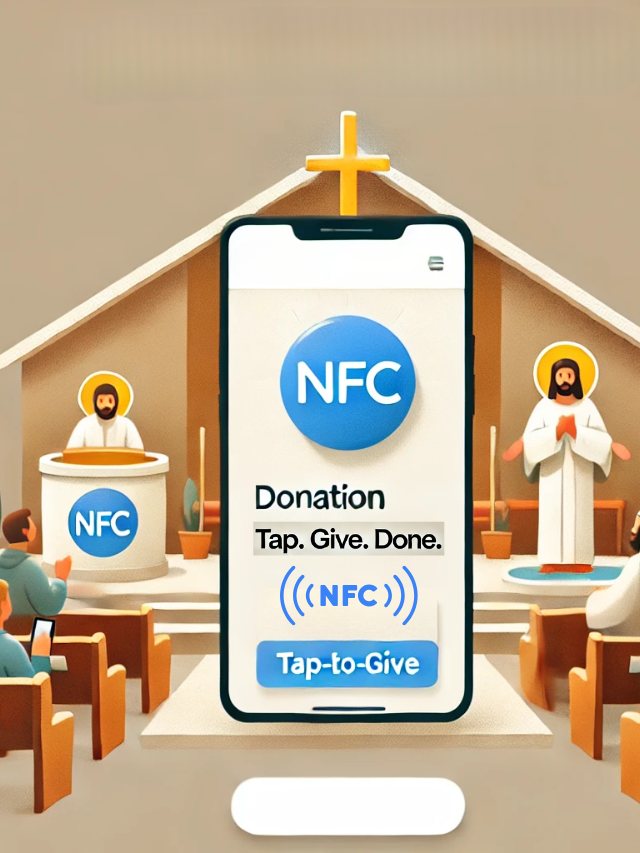 Summer’s here. Your donors? Not so much.
Summer’s here. Your donors? Not so much.
Giving drops. Emails go quiet. Everyone’s on vacation.
But this isn’t the time to slow down.
It’s the perfect time to hit reset and reconnect with your donors using a fresh strategy.Why?
Most nonprofits focus on year‑end. But June and July? They’re wide open. Less competition. More attention. Real momentum.
In fact, total U.S. charitable giving reached $592.5 billion in 2024, a 3.3% increase over the previous year after adjusting for inflation, according to the Philanthropy Digest report. That shows donor generosity isn’t limited to December; it’s alive and growing year-round when you stay visible.
Donors aren’t necessarily saying no. They’re just not being asked in the right way—or at all.
Because mid-year giving is when most nonprofits go silent. Which means you can stand out.So if you’ve been wondering why giving feels stuck—or how to revive donor energy—this post is your plan.
Let’s break it down.
1. Why Mid-Year Is a Hidden Goldmine for Fundraising
Donors aren’t necessarily saying no. They’re just not being asked in the right way—or at all.
Summer is quiet. Your donors are checking email less, sure. But when do they? Your message won’t be buried under dozens of other appeals.
Nonprofits that stay visible and connected during summer often see stronger year-end results. Instead of chasing volume, you focus on quality engagement. That’s how donor lifetime value grows.
Here’s an example:
A food justice nonprofit segmented its lapsed donors by the size of their last gift and sent a three-week “We Remember You” campaign in late June. The result was a 19 percent reactivation rate and several new recurring donors.
Action tip: Review last year’s mid-year donor data. Who gave? Who didn’t? Create a straightforward campaign based on that list.
2. Audit What’s Working (And What’s Not)
If you’re still using the same emails, donation pages, and calls to action from last year, it’s time for a pulse check.
Start by digging into:
- Email open rates. Are they above 20 percent?
- Click-through rates. Are donors taking action after opening
- Conversion rates. Are people completing their donations?
Check where people drop off. On average, many donors abandon donation forms due to friction or a lack of clarity.
Look at your analytics and platform reports to identify high-exit pages. You might discover something simple, like a broken button or a confusing form.
Focus first on:
- Confusing navigation on your donation page
- Weak subject lines that get skipped
- Generic CTAs like “Donate Now” instead of “Help One Student Today”
Small improvements here can lead to big results.
3. Create a Donor Re-Engagement Series
Donor fatigue is real, but silence makes it worse.
That’s why a simple, heartfelt re-engagement sequence works wonders. The goal is not just to get a gift—it’s to rebuild the relationship.
Try a three-email series:
- Thank You Again
Remind them you still remember their last gift. Share appreciation without asking for anything. - Impact Update
Show what their last donation helped accomplish. Use real examples or stories. - Join Us Again
Make a gentle ask. Keep the amount small and the message personal. End with a line like, “Even $10 helps keep this mission going.”
Make sure the tone is warm and personal, not transactional. Here are our 7 samples and resources to express gratitude to the donors.
4. Refresh Your Messaging

If your emails sound robotic or generic, your donors won’t respond. Messaging matters more than ever.
What to update:
- Subject lines
Try using a specific language. Instead of “Mid-Year Appeal,” write “Lena found safe housing—thanks to you.” - Photos and visuals
Feature real people and stories, not stock images. - Call-to-action buttons
Make them action-based. Try “Send 5 kids to camp” instead of “Donate Now.”
Also, make sure every message answers these two questions:
- Why now?
- Why me?
When people understand the urgency and feel like they matter, they’re more likely to give again.
5. Launch a Summer Match Challenge
Matching gift campaigns during the summer create urgency, especially when donors may feel less connected.
Structure your match campaign like this:
- Keep it short. Five to seven days work well.
- Set a clear, specific goal. For example: “Raise $2,500 to feed 100 families.”
- Use a visible progress bar or goal tracker to show momentum.
- Communicate the match. For instance, “Every dollar doubles until Friday at midnight.”
Even a small matching fund can create a strong response when paired with emotional storytelling and a time limit.
6. Involve Donors Beyond Just Giving
Not everyone is ready to give again right now—and that’s okay.
You can still keep donors engaged by involving them in non-financial ways. This builds connection, trust, and long-term loyalty.
Ideas to try:
- Ask donors to vote on your next campaign theme
- Highlight a “Supporter of the Month” in your newsletter
- Send handwritten thank-you notes to long-time givers
- Invite them to attend a short online impact briefing
These small touchpoints remind donors that they’re part of something bigger. It’s not always about the ask—it’s about the relationship. Get ideas and learn how to draft a perfect acknowledgement letter.
7. Set the Stage for Year-End Now
Most successful year-end campaigns aren’t built in November. They’re shaped and tested throughout the year.
Use the summer months to test what works:
- Try different subject lines and see which gets more opens
- Experiment with storytelling formats
- Test donation form layouts and suggested gift amounts
Also, segment your donor list. Group people by behavior:
- Loyal, recurring donors
- First-time donors from last year
- Lapsed donors who gave in previous years
- Event participants who haven’t donated yet
This way, you’ll send more relevant messages in Q4, and your results will reflect it.
Think of mid-year as your rehearsal. The more you refine now, the stronger your year-end performance will be.
Ready to Win Back Your Donors?
Mid-year doesn’t have to be a dead zone for giving.
It can be the launchpad for your best fundraising year yet.
By auditing your current efforts, refreshing your messaging, re-engaging lapsed supporters, and testing new strategies, you’ll do more than reactivate donors—you’ll set yourself up for lasting success.
It’s not about doing everything. It’s about doing the right things—with heart, clarity, and smart timing.
Take one idea from this list and start today. Your year-end numbers will thank you for it.
Frequently Asked Questions
What is a mid-year giving reset?
It’s a fundraising strategy used by nonprofits during the summer to re-engage donors, refresh messaging, and build momentum heading into the second half of the year.
Why do donors stop giving mid-year?
Many donors get busy or distracted. The summer months tend to be quieter for communication, which can lead to donor disengagement. A reset strategy helps reconnect with them.
How do I re-engage past donors?
Start with appreciation. Share what their last gift helped accomplish. Then follow up with a warm, personal invitation to support your mission again.
Is summer a good time to fundraise?
Yes. While giving volume may be lower, there’s less noise. That means your message can stand out and make a deeper impact.
What’s one simple thing I can do right now?
Send a short thank-you email to donors who haven’t given in the past six months. Keep it simple, genuine, and focused on gratitude.
Ready to re-engage your donors and reset your strategy? Book a free strategy session today, and we’ll help you build a mid-year plan that fits your goals, audience, and timeline.
donor management software donor retention easy fundraising ideas Fundraising for Nonprofits
Last modified: July 14, 2025

